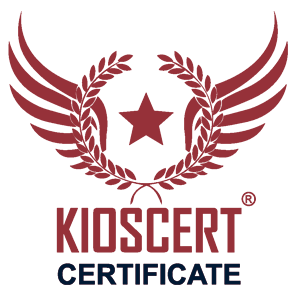
ISO 10002 Omnichannel Complaint Management: Strategy, Scope and Core Principles
ISO 10002 provides a framework for handling customer complaints in a systematic, fair, and timely manner. This guide adapts the requirements of the standard to the reality of omnichannel (phone, email, social media, and other touchpoints) by focusing on channel integration, category–priority–SLA matrix, root cause analysis, VOC/NPS alignment, dashboard and segment-based reports, legal risk complaints, customer recovery programs, privacy and data retention, supplier-related complaints, and internal audit checklist.
Omnichannel complaint management requires data integrity across channels, process traceability, and a single customer view. Therefore, the process should follow a structured flow: Intake and verification → Classification and prioritization → Investigation and resolution → Communication and closure → Learning and improvement.
What Will You Achieve With This Guide?
Unified complaint handling across channels, consistent SLA management, sustainable solutions, VOC/NPS alignment, executive dashboards, and audit-ready evidence base.
Channel Integration in Omnichannel Complaint Management
The key factor in effective complaint management is integrating all communication channels into a single system. Complaints received via phone, email, forms, mobile apps, and social media must be stored in a centralized repository to ensure a uniform process.
- Consistency: Same response tone and speed across all channels.
- Single Customer View: Access to full complaint history from one screen.
- Data Integrity: Preventing lost emails or duplicate records from social channels.
- Efficiency: Agents managing all cases through the same system regardless of channel.
Practical Example
A social media complaint automatically enters the CRM with a case number, linked to customer data, and flows through the same process as other channels.
Category–Priority–SLA Matrix
For fair and effective complaint management, complaints must be properly classified, prioritized, and linked to SLA (Service Level Agreement) targets. ISO 10002 requires a “fair, timely, and traceable” structure to manage customer expectations clearly.
Categories:
- Product-related: Defective, incomplete, or damaged product.
- Service-related: Delivery delays, weak support, misinformation.
- Supplier-related: Issues caused by external partners.
- Legal risk: Compensation claims, fines, or regulatory breaches.
Priorities:
- Critical: Legal risk or safety hazard.
- High: May lead to customer loss.
- Medium: Operational disruptions.
- Low: Minor, easily fixable issues.
SLA Examples:
- Critical: Response in 2 hours, resolution in 24 hours.
- High: Response in 4 hours, resolution in 48 hours.
- Medium: Response within 1 business day, resolution in 3 business days.
- Low: Response within 2 business days, resolution in 5 business days.
Root Cause Analysis and Closure
Sustainable improvement requires addressing the root causes of complaints, not just the symptoms. The goal is to reduce recurrence and build customer trust.
Analysis methods:
- 5 Whys: Asking “why” repeatedly to trace the root cause.
- Fishbone Diagram (Ishikawa): Mapping causes under People, Process, Technology, Materials, Environment.
- Pareto Analysis: Identifying the few causes driving most complaints.
Corrective and Preventive Actions (CAPA):
- Corrective: Fixing the current issue.
- Preventive: Changes or training to avoid recurrence.
Closure criteria:
- Communicating the solution clearly and respectfully to the customer.
- Documenting root cause, CAPA, and lessons learned.
- Integrating recurrence monitoring into future plans.
Aligning with Voice of the Customer (VOC) and Net Promoter Score (NPS)
Success in complaint management is not only measured by quick response times but also by Voice of the Customer (VOC) and Net Promoter Score (NPS). ISO 10002 emphasizes processes that reflect customer expectations and support continuous improvement.
VOC sources:
- Post-closure surveys (phone, email, survey links).
- Open-text customer feedback forms.
- Text and sentiment analysis from digital channels.
Integrating NPS:
- Promoters (9–10): Leverage for referrals and advocacy.
- Passives (7–8): Identify operational improvements.
- Detractors (0–6): Trigger callbacks, additional solutions, and personalized apologies.
Feeding VOC/NPS results into the CAPA cycle ensures complaints are turned into tangible improvements.
Dashboards and Segment-Based Reports
Transparency and effective decision-making require interactive dashboards and reports by segment. These tools help monitor SLA performance, root cause distribution, VOC/NPS trends, and compensation costs.
Key KPIs:
- Volume: Number of new complaints daily/weekly.
- Speed: First response time (FRT), time to resolution (TTR).
- Quality: First contact resolution (FCR), repeat complaint rate.
- Customer satisfaction: CSAT and NPS scores.
- Cost: Compensation spend and average per case.
Reports should be broken down by channel, customer segment (B2B/B2C), product, region, and supplier.
Legal Risk Complaints
Some complaints may involve legal risk such as compensation claims, data breaches, or contractual disputes. These require rapid escalation, legal review, and evidence preservation.
Steps:
- Automatic tagging of complaints containing terms like “lawsuit” or “compensation”.
- Immediate notification to legal and compliance teams.
- Legal hold on emails, records, and contracts as evidence.
- Use of pre-approved legal response templates only.
This approach protects the organization’s legal position and mitigates risk exposure.
Customer Recovery Program
Even after a negative experience, a structured customer recovery program can preserve and even increase lifetime value. The aim is to turn the complaint into an opportunity for trust rebuilding and loyalty strengthening.
Triggers:
- Low NPS score (0–6).
- Repeated complaint on the same issue.
- Churn risk: account closure, cancellation, or returns.
Program actions:
- Callback within 24 hours, with apology and solution plan.
- Compensation gestures (discounts, gifts, free services) based on impact level.
- Differentiated approach for VIP/B2B/B2C customers.
- Manager-level follow-up for critical cases.
A well-structured recovery playbook transforms dissatisfaction into restored trust and reduced negative word of mouth.
Privacy and Data Retention
Omnichannel complaint management often involves handling sensitive personal data. ISO 10002 requires compliance with laws like GDPR/KVKK through principles of data minimization, purpose limitation, retention periods, and security.
Data lifecycle:
- Collection: Only necessary fields from calls, emails, or forms.
- Processing: For classification and root cause analysis.
- Sharing: Limited access based on “need to know”.
- Retention: Deletion or anonymization after defined periods.
Protection measures:
- Encryption during transmission and storage.
- Access rights managed through RBAC (Role-Based Access Control).
- Immutable audit logs.
- Data masking or anonymization for analytics.
This ensures legal compliance and strengthens customer trust in complaint handling.
Supplier-Related Complaints
Some complaints may originate from external suppliers. For fair and quick handling, a dedicated workflow must be embedded into supplier contracts.
Steps:
- Registering the complaint in the system with supplier and contract details.
- Marking as “supplier-related” category.
- Routing to supplier via portal or API.
- Customer communication remains solely through the organization.
- Supplier uploads RCA (Root Cause Analysis) and CAPA (Corrective and Preventive Action) reports.
Supplier performance is measured through SLA/KPIs and reflected in scorecards.
Internal Audit Checklist
Internal audits verify whether the complaint management system complies with ISO 10002. The approach follows the sequence: Policy → Procedure → Execution → Evidence.
Audit focus areas:
- Presence of a documented and updated complaints policy.
- Availability of complete records (priority, SLA, root cause, CAPA).
- Process compliance with privacy and legal requirements.
- Monitoring SLA performance, NPS, and recurrence rates.
- Documenting findings as Major, Minor, or Observations.
This transforms audits into a continuous improvement tool rather than a mere control activity.
30/60/90 Day Roadmap
Implementing ISO 10002 requires a phased approach that balances quick wins with long-term structure.
First 30 days:
- Appoint sponsors and process owners.
- Launch basic procedures (intake, classification, SLA).
- Set up a simple operational dashboard.
- Train staff on empathy and privacy basics.
By 60 days:
- Embed root cause analysis templates into the system.
- Activate CSAT/NPS surveys.
- Integrate suppliers with RCA/CAPA obligations.
- Deploy legal risk alerts and workflows.
By 90 days and beyond:
- Align team OKRs/KPIs with SLA and customer satisfaction goals.
- Produce reports segmented by customer group and product.
- Conduct the first internal audit cycle.
- Implement VOC-driven improvements monthly.
With this roadmap, the system becomes audit-ready, data-driven, and customer-focused.
